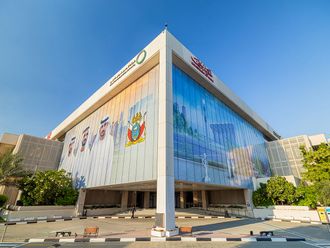Recent headlines in Dubai about a tower being damaged due to fire have once again raised the issue of Home Owners’ Associations (HOA) and their role in protecting the investment of unit owners, both in terms of specific incidents as well as for the overall upkeep of the structure.
While the HOA law stipulates the mandatory practice of a reserve fund, in practice the use and expertise of boards have been variable. Situations have started to arise in the freehold community where the reserve fund has been substantially underfunded, resulting in a deterioration of the building’s standard over time.
This brings into question the mandate of such associations and their empowerment, and the challenge of maintaining the structure’s intrinsic value over time.
All real estate developments over time face obsolescence. As structures start to deteriorate, certain developments tend to languish and ultimately go through the cycle of ‘redevelopment’.
In developed jurisdictions, the HOA eventually takes over and, in consonance with private equity money, regenerates the neighbourhood and/or the building in question making it viable again over a period of time. However, this regeneration is predicated on the sophistication of such associations and, in most cases, where the projects are not high-end in nature and where the project structure can be duplicated elsewhere, the development tends to languish causing investors to suffer.
In areas where the development is not of high quality and where building materials have been compromised, the inadequacies of the structure become apparent often within a few years of handover. The funds raised by way of common area fees become insufficient to maintain the upkeep of the building.
This then leads to a vicious downward spiral, where reaching consensus in terms of raising such fees becomes tenuous and an underfunded general reserve and sinking fund leads to the building becoming increasingly unattractive for existing and new investors alike. This adds to the deterioration in asset values.
These community fees become increasingly difficult to impose and achieve a consensus on, especially since first-time buyers of such structures are typically not long term. And there exists a moral hazard to vote in favour of lower fees, thereby leading to underfunded reserve and sinking funds.
In most of these cases, it is the sophistication of the HOA boards (or lack thereof) towards managing and budgeting for cashflow at inception that leads to situations where there is a loss of consensus. This then leads straight to a situation of deterioration.
Once this sets in, then extracting value becomes increasingly difficult to achieve as even mortgage providers become increasingly reluctant to lend against assets that have below par upkeep standards.
At inception, the HOA is a unique blend of government and private enterprise. It is more than an organisation or a quasi-governmental agency. It encompasses a multidimensional blend of principles of corporate, real estate law and social psychology underpinned with a strong sense of fiscal and financial prudence.
It needs empowerment to be able to enforce fees at the individual level, with the backup of stringent fines to cause compliance. However, the board also requires adequate oversight with financial expertise that allows for the sufficient capitalisation of the general reserve fund and the sinking fund, with the option of recourse to the developer in instances where these have found to be insufficient since inception.
In Dubai, there are many instances of such developments in high-end areas. Certain properties have deteriorated causing investor asymmetry in terms of participation.
The challenge for regulators is not only in terms of imposing a mandatory minimum funding requirements at inception but also to formulate and create an appropriate strategy for the individual investor. Only by having individual investor preservation rights can lead to sustainable confidence on their part.
— The writer is the Managing Director of Global Capital Partners.











